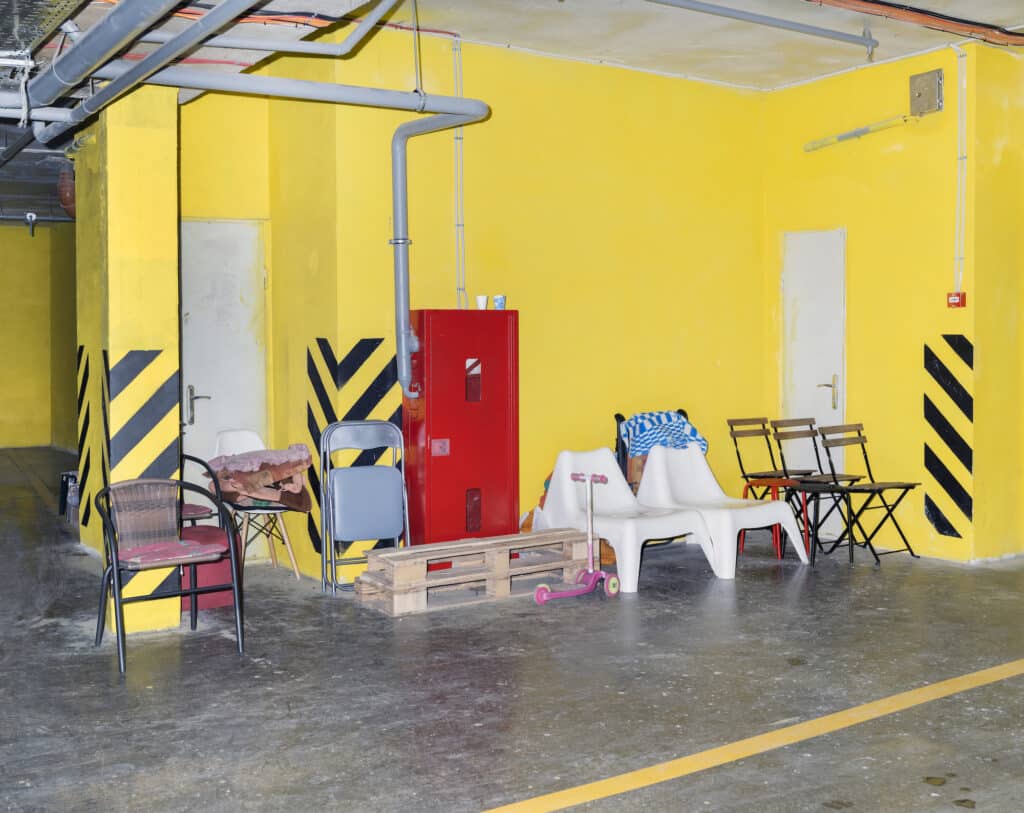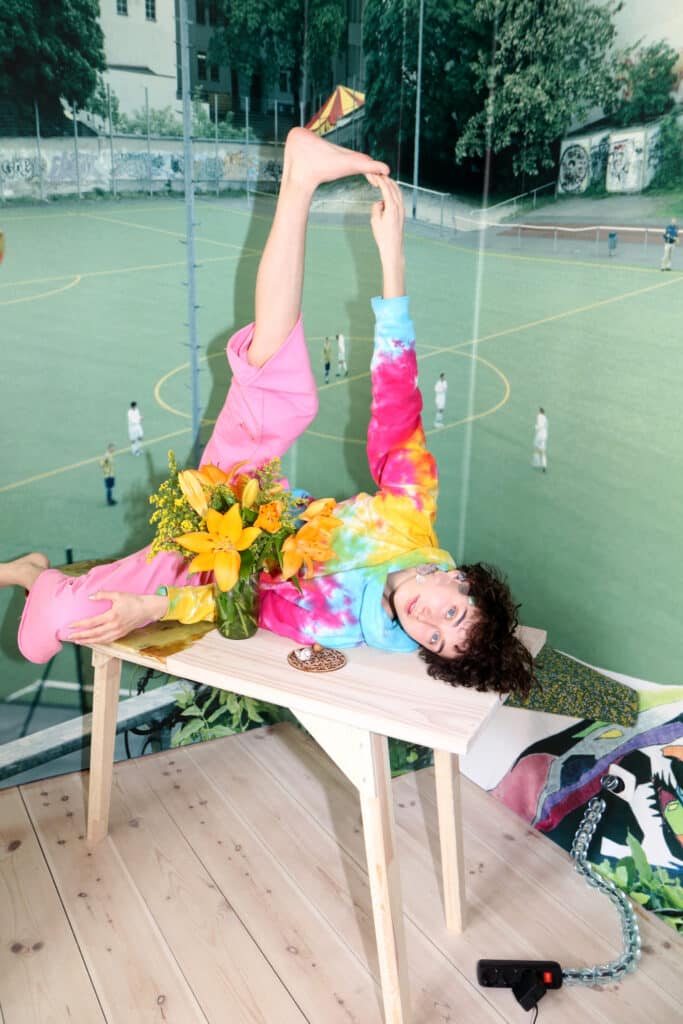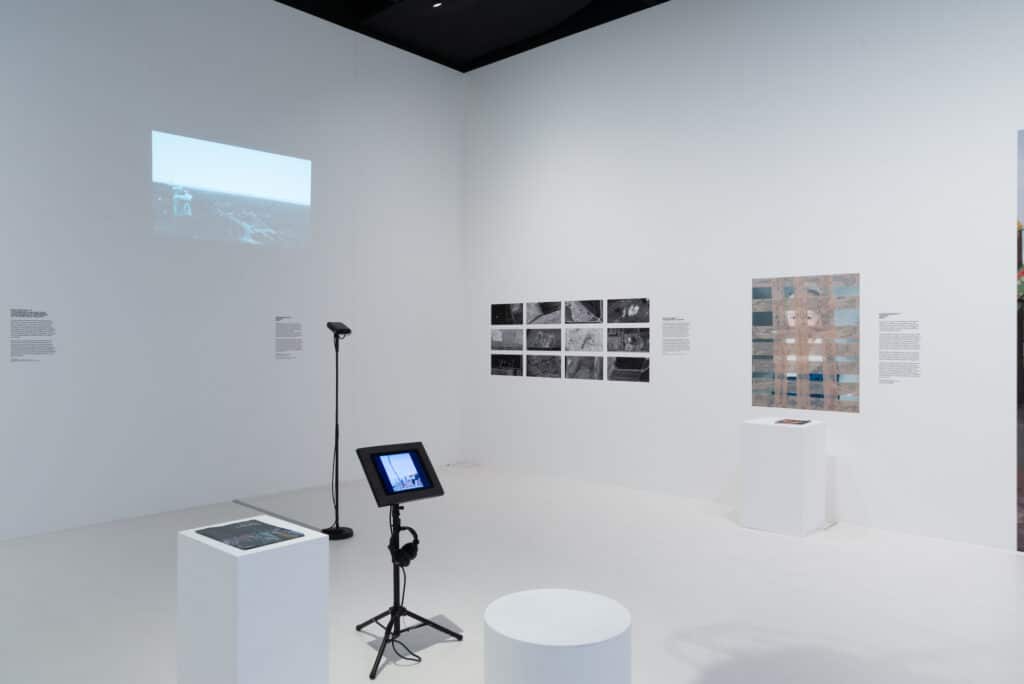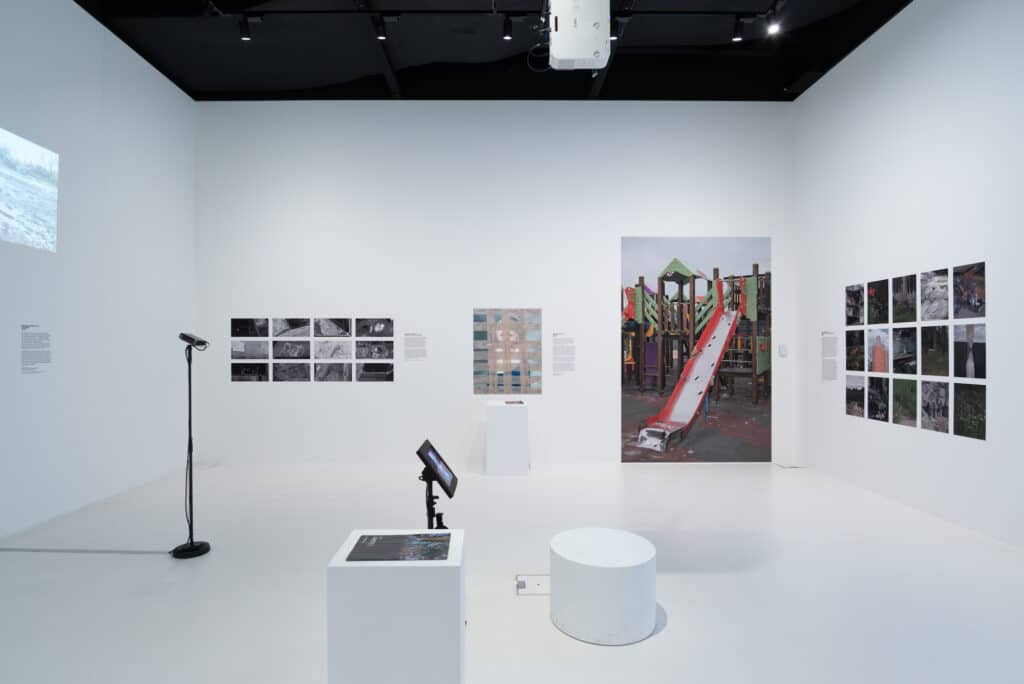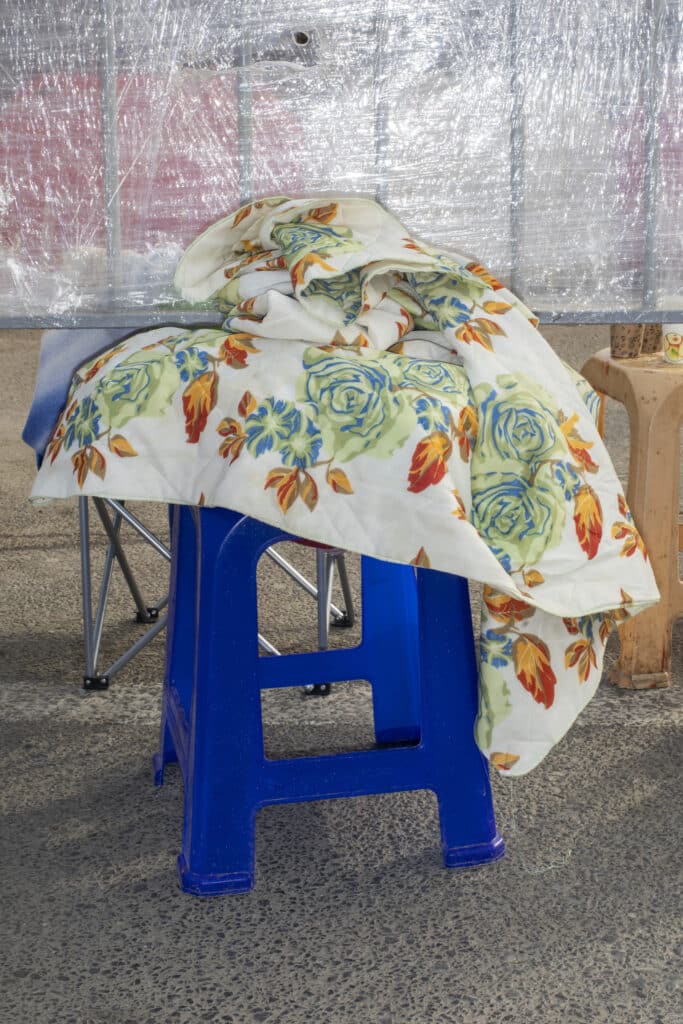“Because of the extreme sensitivity of the subject, it is difficult today to bring all sides together in one exhibition room. The works presented here do not represent all points of view.” These words figure at the entrance to the exhibition “#Ukraine: Images of War”, as if to rebut in advance any accusation of bias.
The issue, however, is not space. Even if the exhibition spanned multiple rooms, it would have been impossible to accurately represent the situation in Ukraine, first, because it’s too complex and, second, it keeps changing.
When Nathalie Herschdorfer took over a few months ago as the director of Photo Élysée, she quickly showed a desire to respond to current events, while gauging the difficulty—and therefore the stakes—of such an exercise. During a round-table discussion organized in connection with this exhibition, Herschdorfer reminded us that Photo Élysée should not address current events the way a news agency might. Accordingly, the exhibition shows how news photography, and more specifically war photography, is driven to redefine itself in the face of new photographic approaches and new narrative modes.
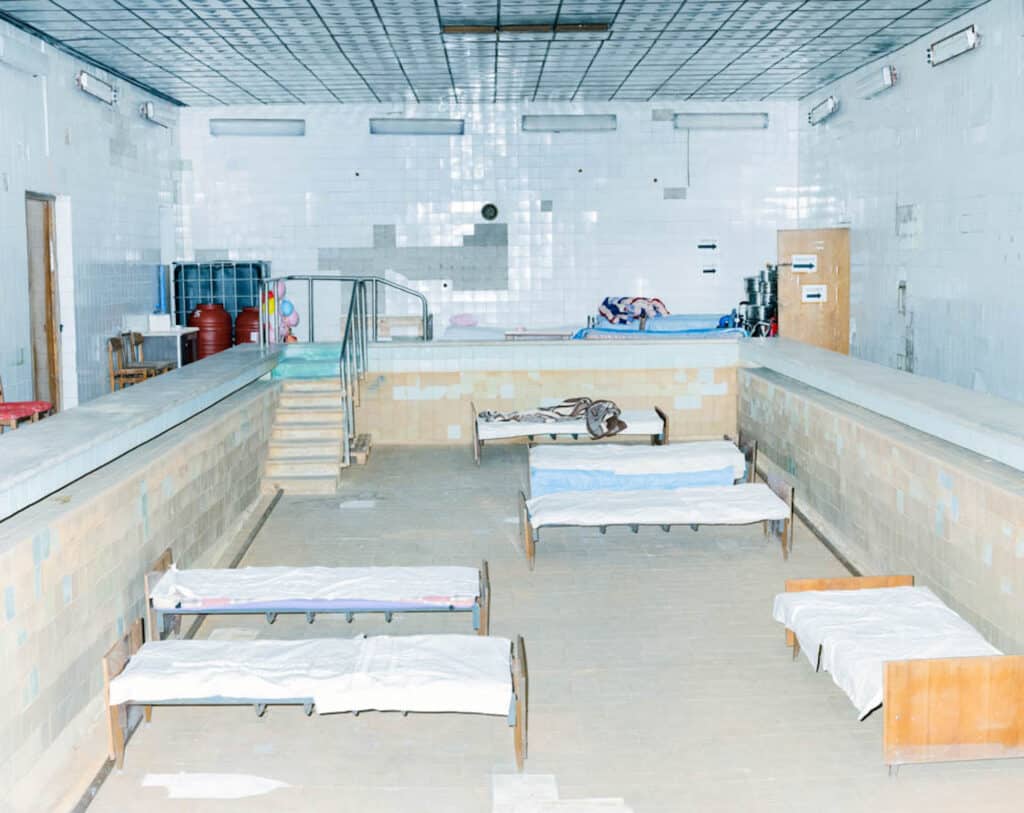
Artists caught up in current events
One discovery is the work of Ukrainian photographer Igor Chekachkov: begun over a decade ago, it focuses on interactions between people who share the same space and on how they organize their daily life. Forced to leave his home and then his city of Kharkiv, Chekachkov turned his interest to the sociology of exiles who have found refuge in hostels and makeshift housing.
In the medieval city of Lviv, a group of volunteers came together to protect the historical heritage of the city, in effort to save objects expressive of Ukrainian culture and identity. Captured by the photographer Elena Subach, the tender, ineffectual gestures of salvaging, packing, and storing statues and icons recall the care extended to wounded soldiers or civilians injured in bombings.
Likewise working in Lviv, Rafal Milach photographed underground spaces, basements of administrative buildings, and parking structures transformed into bomb shelters. In his images, as in Subach’s or Chekachkov’s, there are no automatic weapons, corpses, or houses on fire. All the same, the violence of war is inescapable.
An artistic approach to documentary
The Frenchman Emeric Lhuisset studies artistic rendition of geopolitical subjects and defines himself as a visual artist. He participates in this exhibition with a series of portraits of Ukrainian civilians. The subjects are photographed from behind and, next to each image, we can read their answers to two war-related questions: What do you think is going to happen next? What do you want to happen?
Another participant in this group exhibition, Eric Bouvet, is a photographer who has been present at the frontlines, from Grozny and Benghazi to Maidan and Kabul, for forty years. Exasperated by what he has seen in Ukraine, he produced a series of “sonoramas,” short films cobbled together on the go using fresh images and adding commentary about the photographer’s experiences, emotions, anger.
Bouvet thus rejects the principal tenet of photojournalism, namely to remain impartial, to show while abstaining from commentary. “Eric Bouvet went to Ukraine without being commissioned by a newspaper, he had to cover his own costs, which raises the issue of the difficulties involved in this job. He lets us hear his own voice and this is very significant for a photographer. He speaks in the first person, whereas traditionally, his job is to encapsulate the complexity of a war in a single image,” says Herschdorfer.
Journalism in question
The traditional approach to photojournalism still has a role to play, in particular thanks to its well-tested, immediately understandable language. One wall in the exhibition spotlights twenty front pages from daily press devoted to classic representations of war: explosions, burning bridges, and portraits of combatants. Here, there is no time for metaphor.
A portrait of the wife of the Ukrainian president, ran the Swiss daily Le Temps last June, is all the more noticeable. The first lady is framed by white curtains and a pile of equally white sandbags, which transform her into the heroine of a Greek tragedy, a recluse in her marble palace. Another staged photograph was done for the American magazine Vogue by Annie Leibovitz: she was dispatched to do a series of portraits of the Ukrainian presidential couple, very inspired by fashion and luxury photography.
As the director of Photo Élysée notes, “these images coexist and clash, they get to us in bits and pieces. Whenever we look at our smart phone, we won’t know what to expect.”
The exhibition tackles contradictions stemming from wartime chaos. The limited size of the exhibition room does not give us time to answer each question and accentuates a sense of hybridity brought on by the different projects and variations in visual syntax: information and showmanship, reservation and emotion, instantaneity and duration come together in a pandemonium that is both troubling and eye-opening.
“#Ukraine, Images of War”, Photo Elysée, Lausanne, Switzerland. Until January 29, 2023
